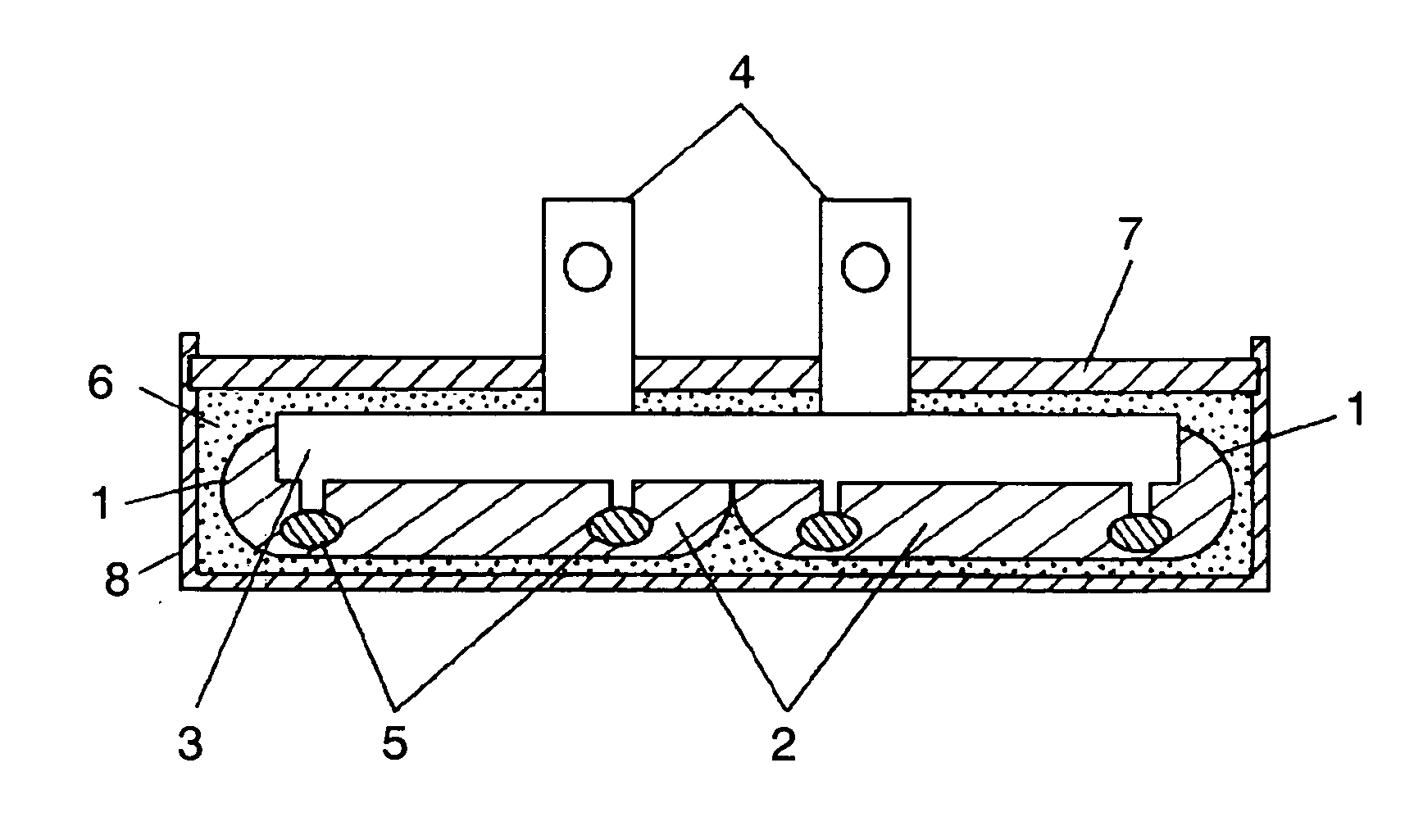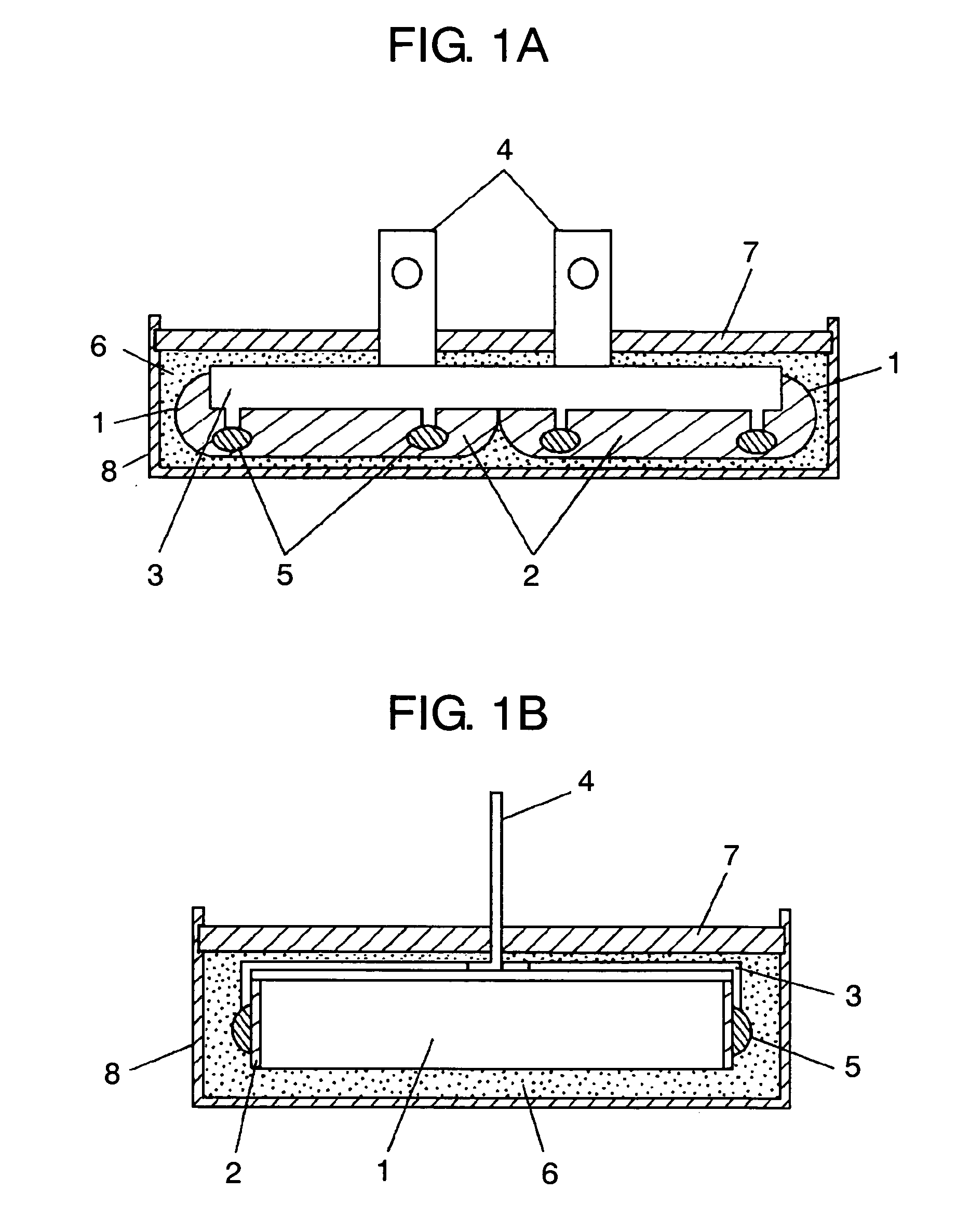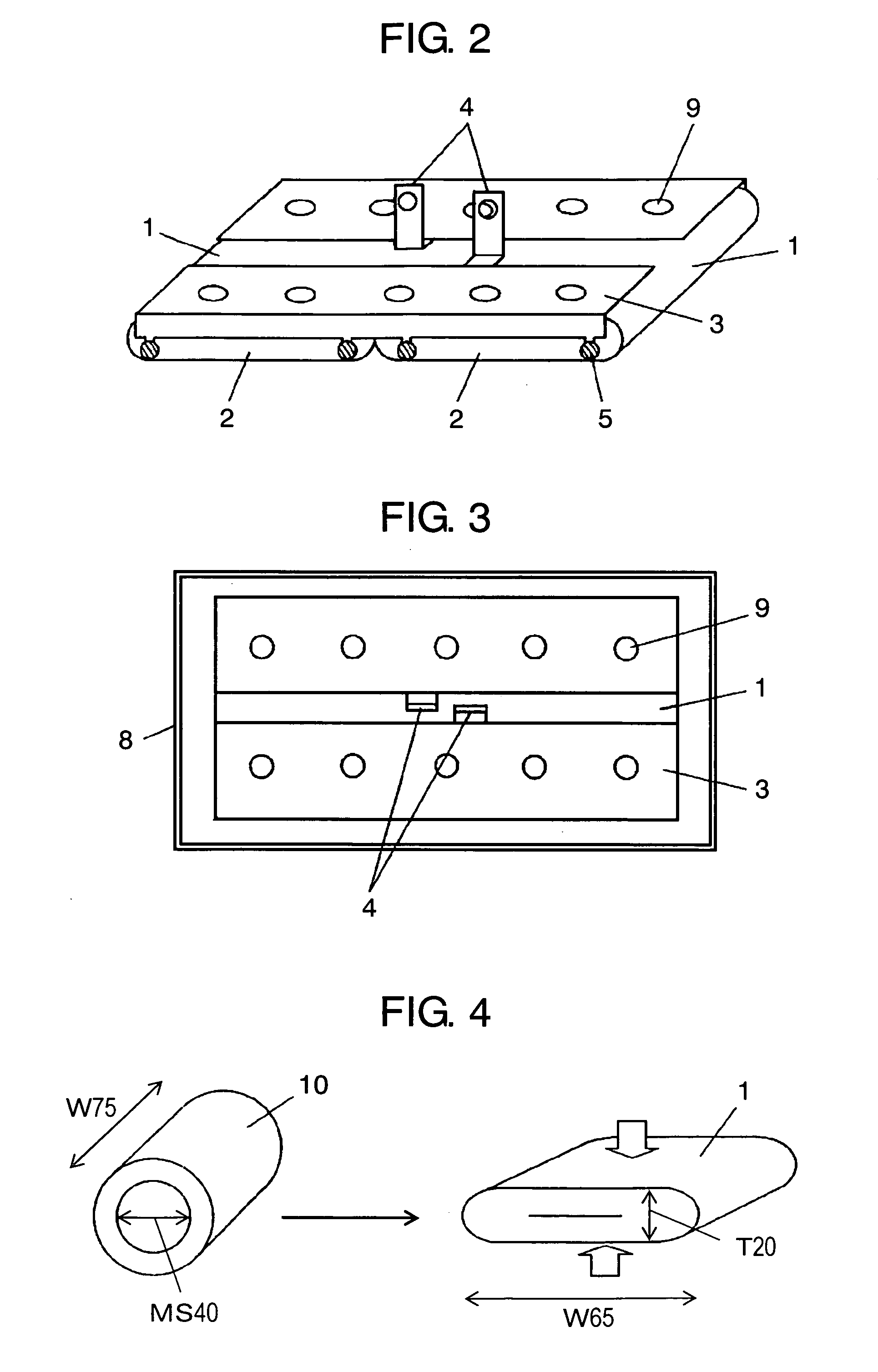Film capacitor and method of manufacturing the same
a film capacitor and capacitor technology, applied in the field of film capacitors, can solve the problems of cracks formed in all samples of heat cycle tests, cracks likely to be formed in armor resin, and prior arts involve some problems, so as to reduce the risk of cracks in resin, and reduce the risk of cracks
- Summary
- Abstract
- Description
- Claims
- Application Information
AI Technical Summary
Benefits of technology
Problems solved by technology
Method used
Image
Examples
embodiment 1
[0026] A configuration embodiment 1 of the invention is described while referring to the accompanying drawings. FIG. 1A is a side view as seen from spray electrode direction of film capacitor. FIG. 1B is a side view as seen from vertical direction of spray electrode of film capacitor.
[0027]FIG. 1A and FIG. 1B show a film capacitor 100 of the invention. The film capacitor 100 has a film capacitor element 1 made of polypropylene film of thickness of about 3 μm as dielectric element. On one side of the polypropylene film, aluminum is formed as vapor deposition metal. By winding these two vapor deposition metal films, the film capacitor element 1 is formed.
[0028] Two metallized polypropylene films having metal evaporated on one side, being used in the film capacitor element 1, are provided with a fine margin not forming vapor deposition layer at one end in longitudinal direction as generally formed in metallized capacitor conventionally. Two metallized films are overlaid and wound in ...
embodiment 2
[0079] In embodiment 2, the coefficient of thermal expansion of second epoxy resin composition 7 of embodiment 1 is 22 ppm / K. All other specifications and conditions are same as in embodiment 1. As compared with embodiment 1, the coefficient of linear expansion is reduced by increasing the amount of inorganic filler to 75 wt. %.
[0080] In the film capacity of embodiment 2, test results of pouring work efficiency, appearance defects (in 100 completed products), cold heat cycle test (−40 to 105° C., 1000 cycles), and high temperature and high humidity power feed test (temperature 85° C., relative humidity 85%, direct-current voltage 600 V, 2000 hours) are shown in Table 1. Electric capacitance change rate is expressed in percentage by dividing the change amount of electric capacitance by the initial electric capacitance. Values of heat cycle test and high temperature and high humidity test are average values of five samples. Criteria of tests are same as in embodiment 1.
embodiment 3
[0081] In embodiment 3, the coefficient of thermal expansion of first epoxy resin composition 6 of embodiment 1 is 32 ppm / K. All other specifications and conditions are same as in embodiment 1. As compared with embodiment 1, the coefficient of linear expansion is raised by decreasing the amount of inorganic filler to 48 wt. %.
[0082] In the film capacity of embodiment 3, test results of pouring work efficiency, appearance defects (in 100 completed products), cold heat cycle test (−40 to 105° C., 1000 cycles), and high temperature and high humidity power feed test (temperature 85° C., relative humidity 85%, direct-current voltage 600 V, 2000 hours) are shown in Table 1. Electric capacitance change rate is expressed in percentage by dividing the change amount of electric capacitance by the initial electric capacitance. Values of heat cycle test and high temperature and high humidity test are average values of five samples. Criteria of tests are same as in embodiment 1.
PUM
 Login to View More
Login to View More Abstract
Description
Claims
Application Information
 Login to View More
Login to View More - R&D
- Intellectual Property
- Life Sciences
- Materials
- Tech Scout
- Unparalleled Data Quality
- Higher Quality Content
- 60% Fewer Hallucinations
Browse by: Latest US Patents, China's latest patents, Technical Efficacy Thesaurus, Application Domain, Technology Topic, Popular Technical Reports.
© 2025 PatSnap. All rights reserved.Legal|Privacy policy|Modern Slavery Act Transparency Statement|Sitemap|About US| Contact US: help@patsnap.com



